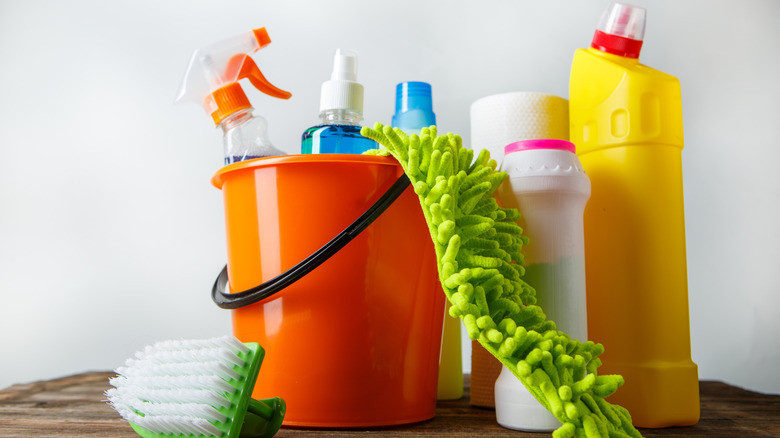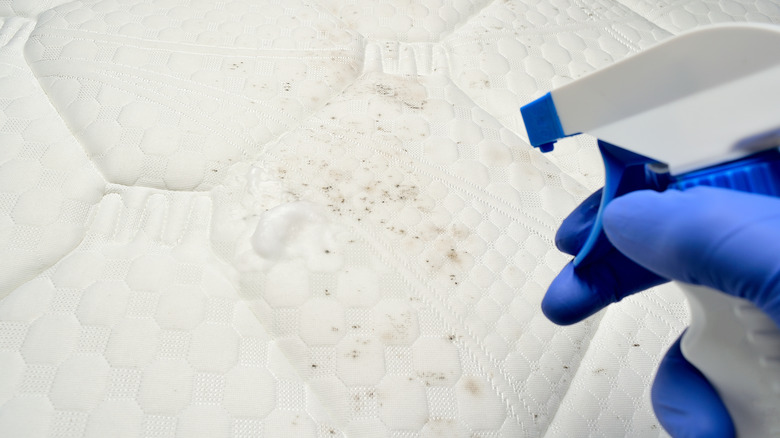Bleach Or Vinegar: Which Is Better To Use On Mold Around The House?
There's something deeply satisfying about cleaning with products our grandparents used. Things like borax, vinegar, baking soda, and bleach have been used for generations, and with good reason. Purchasing one-ingredient products, usually in bulk packaging, can be both financially and environmentally wise. Plus, each one is great for certain kinds of cleaning. For stopping mold in its tracks, both vinegar and bleach have some power. But, when it comes to vinegar vs bleach for a truly effective mold attack, vinegar wins the contest.
Bleach can do the trick against mold, but only in certain situations. If you have mold on a smooth surface, bleach can work as long as you wipe the mold away immediately. However, if you don't take care of the seemingly conquered mold, it can become airborne and trigger allergies. A wonderfully versatile cleaning tool, vinegar digs deep into porous surfaces to kill deep-set mold. Bleach doesn't have this power. It will kill mold that it touches and discolor a bit of the deeply-rooted mold, but the mold tends to come back even worse in just a few days.
Vinegar as major mold foe
Of all the kinds out there, white vinegar is ideal for cleaning and fighting mold. Some people regularly use distilled white vinegar to take care of this common problem. They state that this simple ingredient kills over 80% of mold species, including black mold. They also share that their go-to is a mixture of vinegar and baking soda plus a bit of scrubbing when it comes to mold clean-up.
To do this yourself, spray the affected area with straight vinegar, and let it sit for an hour or more so that the vinegar thoroughly covers the surface. Then, mix 1 teaspoon of baking soda with 2 cups of water and add to a spray bottle. Once the vinegar has had enough time to soak into the mold, spray the spot with the mixture, and scrub it with a brush or sponge. Rinse it with water, and follow up with another spritz of vinegar for good measure.

